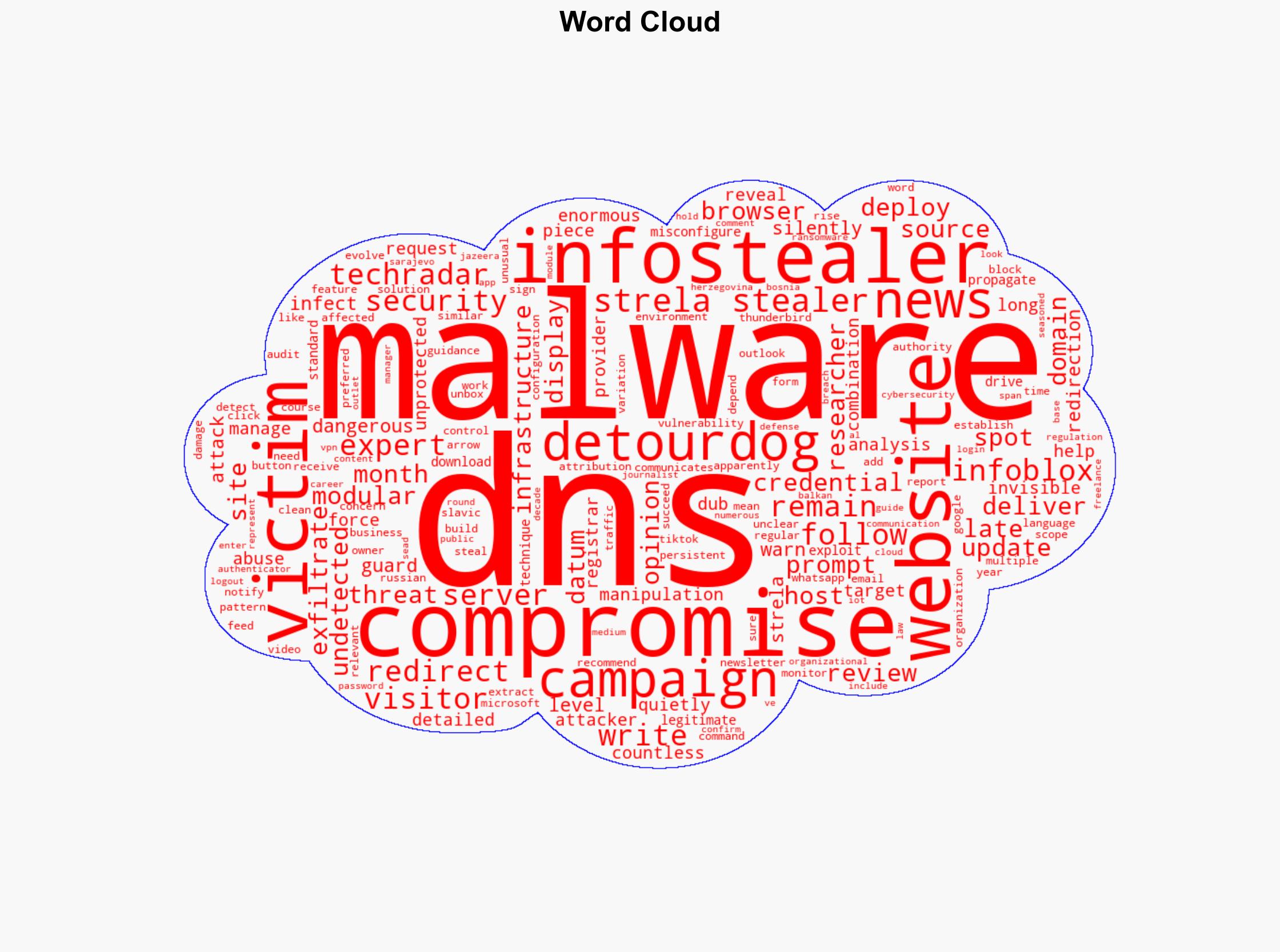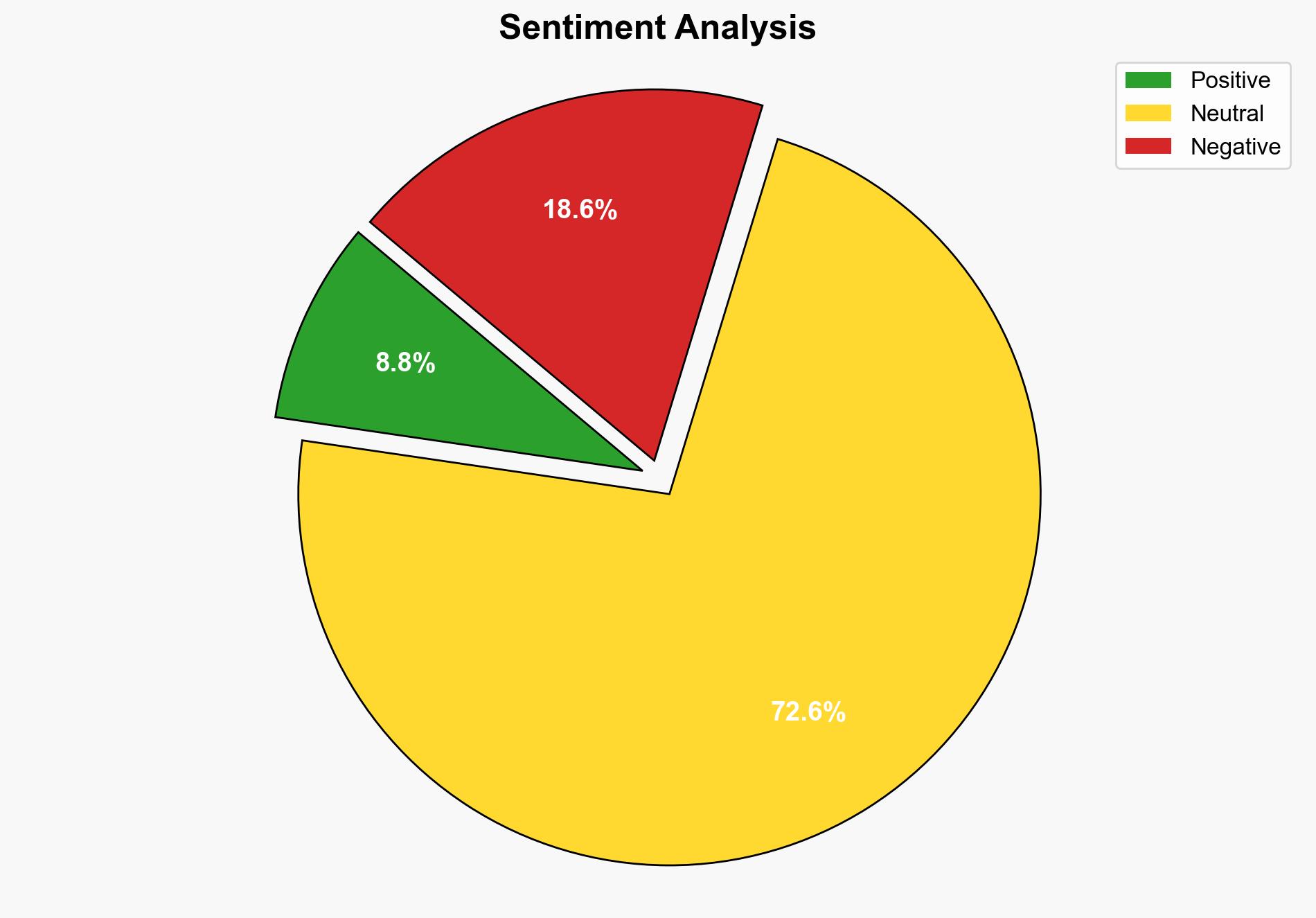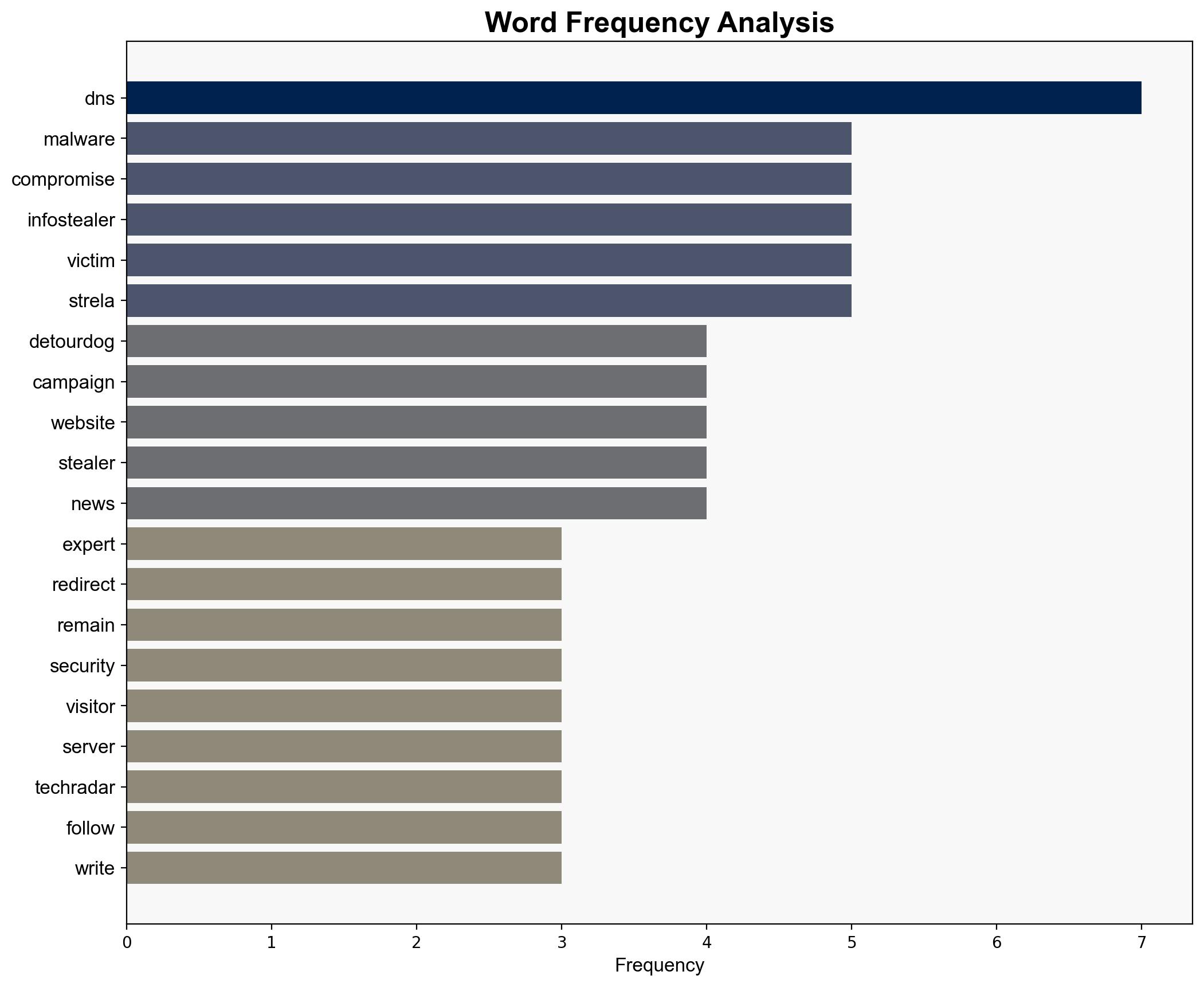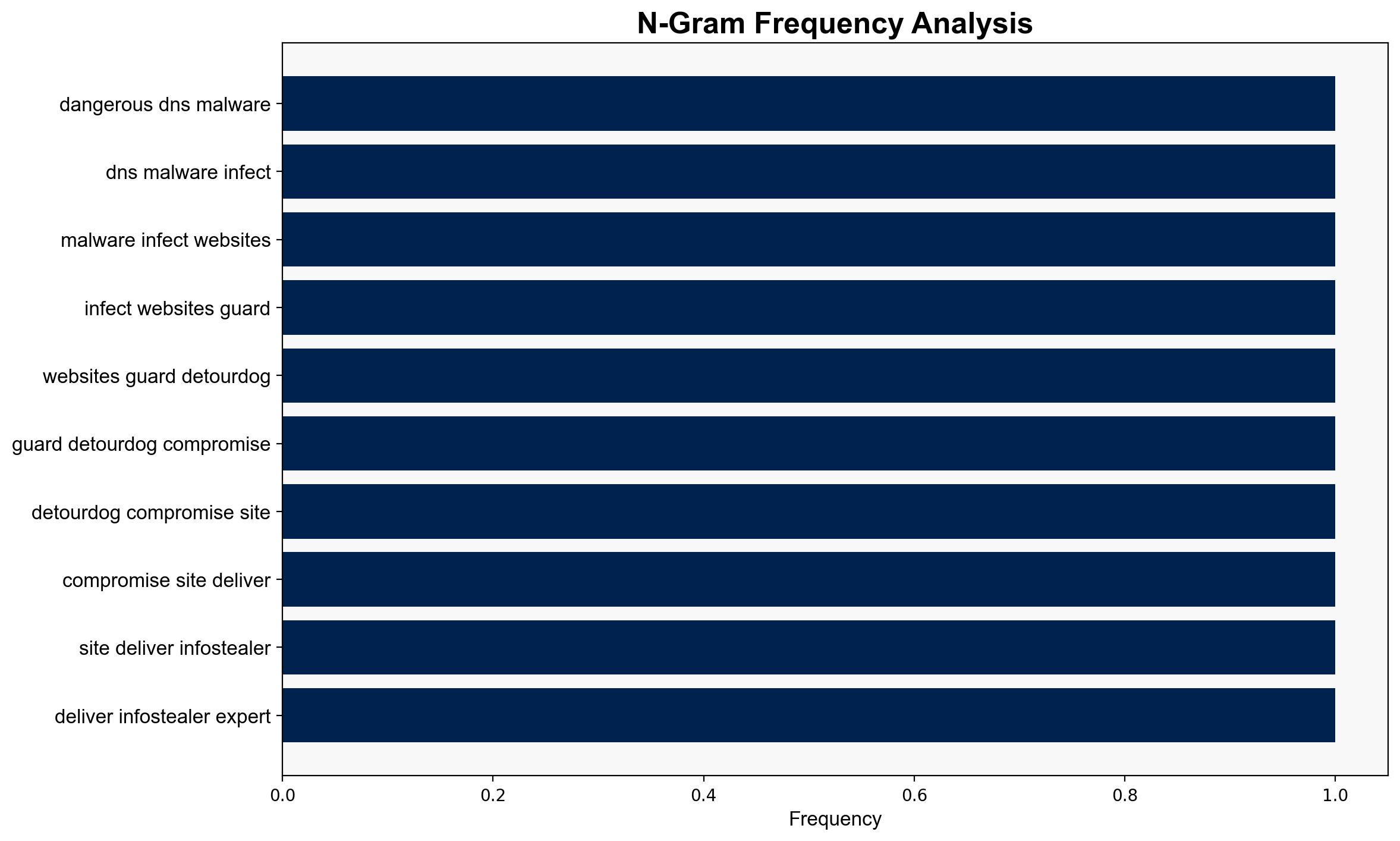Dangerous DNS malware infects over 30000 websites – so be on your guard – TechRadar
Published on: 2025-10-03
Intelligence Report: Dangerous DNS malware infects over 30000 websites – so be on your guard – TechRadar
1. BLUF (Bottom Line Up Front)
The DetourDog malware campaign represents a significant cybersecurity threat, leveraging DNS manipulation to deliver the Strela Stealer infostealer to unsuspecting users. The most supported hypothesis suggests a coordinated cybercriminal operation exploiting DNS vulnerabilities. Confidence level: Moderate. Recommended action: Immediate audit and strengthening of DNS configurations and deployment of advanced DNS security solutions.
2. Competing Hypotheses
1. **Coordinated Cybercriminal Operation**: The DetourDog campaign is a deliberate and organized effort by a cybercriminal group to exploit DNS vulnerabilities, redirecting traffic to deliver the Strela Stealer malware.
2. **State-Sponsored Cyber Espionage**: The use of the term “Strela,” meaning “arrow” in Russian, suggests potential involvement by a state actor, possibly aiming to gather intelligence through widespread credential theft.
Using Analysis of Competing Hypotheses (ACH), the first hypothesis is better supported due to the lack of direct evidence linking state actors and the broader pattern of cybercriminal activity exploiting DNS vulnerabilities.
3. Key Assumptions and Red Flags
– **Assumptions**: The analysis assumes that the primary goal is financial gain rather than espionage. It also assumes that the malware campaign’s scale is indicative of a non-state actor due to its opportunistic nature.
– **Red Flags**: The attribution to a specific actor remains unsubstantiated. The potential for misattribution due to linguistic cues (e.g., “Strela”) could mislead analysis.
– **Blind Spots**: Limited information on the infrastructure used by the attackers and their potential affiliations.
4. Implications and Strategic Risks
The DetourDog campaign could lead to significant economic damage through credential theft and subsequent financial fraud. The manipulation of DNS infrastructure poses a broader risk to internet stability and trust. If state-sponsored, it could escalate geopolitical tensions, particularly if attribution is mismanaged.
5. Recommendations and Outlook
- Conduct comprehensive DNS audits and implement robust security measures to detect and prevent similar threats.
- Enhance international cooperation on cyber threat intelligence sharing to better attribute and mitigate such campaigns.
- Scenario Projections:
- Best Case: Rapid identification and patching of vulnerabilities, minimizing impact.
- Worst Case: Widespread credential theft leading to significant financial and reputational damage.
- Most Likely: Continued exploitation by cybercriminals until DNS security measures are widely adopted.
6. Key Individuals and Entities
– **Infoblox**: The cybersecurity firm that identified and reported the DetourDog campaign.
– **Sead**: A journalist reporting on cybersecurity issues, contributing to public awareness.
7. Thematic Tags
national security threats, cybersecurity, counter-terrorism, regional focus





